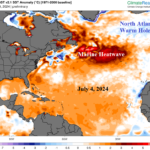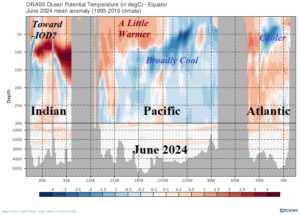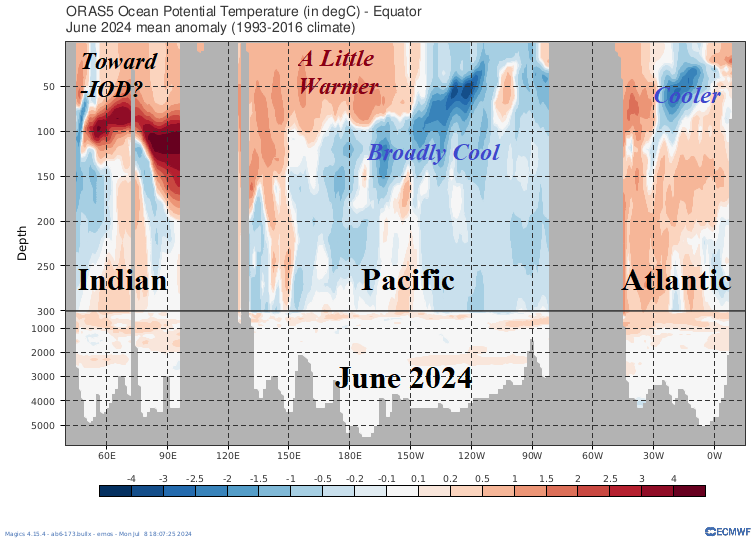
TC Season Forecast Numbers Increase. Hurricanes (13) and Major Hurricanes (6) 2nd Highest on Record
07/05/2024, 4:00 am EDT
Climate Research: The Summer 2024 North Atlantic Warm Hole and Climate Influence
07/15/2024, 5:47 am EDTHighlight: Equatorial Indian Ocean upper ocean heat change supportive of -IOD ahead? Equatorial Pacific upper ocean heat trend indicates no hurry for La Nina development. Record warm equatorial Atlantic upper ocean heat fades.

Fig. 1: ECMWF identifies upper ocean heat anomalies in the equatorial ocean basins for June 2024.
ECMWF identifies significant changes in the upper 100 meters of each ocean basin during June 2024. First, the equatorial Indian Ocean has warmed significantly in the central and east basin at the 50-100-meter depth since April. The opposite condition was present in 2 months ago when positive phase Indian Ocean dipole (+IOD) lingered. Although a shift toward -IOD is not indicated by Australia Bureau of Meteorology, the subsurface trend is monitored closely for a possible change in the IOD forecast. Second, the equatorial Pacific has shifted cooler in the eastern basin to the east of 150W while the central Pacific equatorial region has edged warmer (since April). The deep layer cool anomaly is broader although less amplified compared to 2 months ago. Neutral ENSO persists and the subsurface trend is not particularly supportive of La Nina development. A recently issued ECMWF neutral ENSO phase forecast for the remainder of 2024 is favored by Climate Impact Company. Finally, the record warm upper ocean heat in the Atlantic equatorial region during springtime has cutback significantly in the upper 100 meters particularly off the northwest Africa Coast. At the surface, both the tropical North Atlantic (TNA) and tropical South Atlantic (TSA) remain warmer than normal but with significant cooling during the past 30 days.

Fig. 2: ECMWF identifies upper ocean heat anomalies in the equatorial ocean basins for April 2024.

